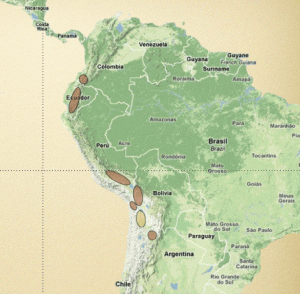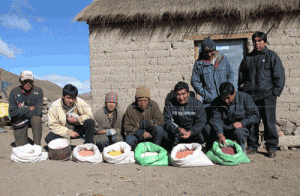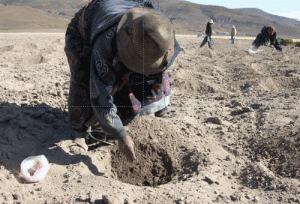High in the Andes of South America, quinoa grows on land where one might be surprised to find anything fourishing – let alone a crop as nutritious and versatile as quinoa.
In summer the sun blazes down mercilessly through the thin atmosphere, while winter is characterized by frigid blasts. The soil is thin and rainfall scarce – and yet quinoa not only grows but thrives on the altiplano, or high plains.
Chief growing areas for the world’s quinoa crop are in Peru and Bolivia, with Ecuador, Colombia and Argentina represented to a lesser degree, as shown by the brown and tan ovals on the map. Altogether this area produces 117 million pounds of quinoa annually, about a third of which is organic.
Small family farms – 70,000 just in Bolivia – grow virtually all of this quinoa, without irrigation, in a desert-like landscape. Fortunately for these subsistence farmers, world-wide interest in quinoa is skyrocketing. In the U.S. alone, imports more than doubled from 2006 to 2008, then doubled again, to 22.3 million pounds, from 2008 to 2010.
This has translated into a major jump in the local economy, with many farmers’ incomes doubling in recent years, enabling their communities to build schools and otherwise improve their standard of living.
So, even as you are improving your own health by eating delicious, nutritious quinoa, you can feel good that your purchase of this very special whole grain is doing good elsewhere, too.
Growing Quinoa in Other Countries
In the U.S. and Canada, quinoa is now being grown in areas of the Rocky Mountains, from Colorado to Saskatchewan, mostly at elevations of 7,000 to 10,000 feet.
Experiments are now underway across the globe, however, in Africa, Asia, and Europe as well as other regions of North and South America. Quinoa has an enormous genetic range, including cultivars that can thrive from sea level to 4000 meters (about 13,000 feet) in altitude.
All photos this page courtesy of Andean Naturals.




